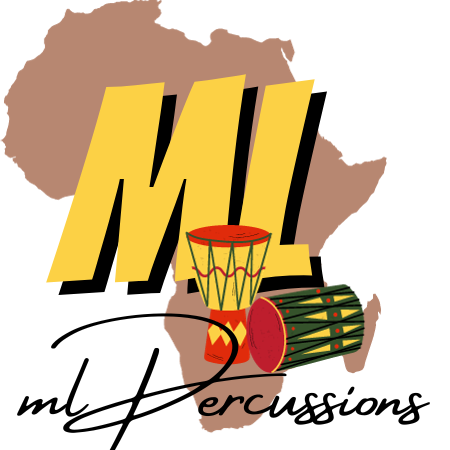The Ultimate African Drum Guide
Share

This African Drum guide highlights key drum types, their cultural significance, and legendary percussionists, exploring their roles and mastery in African music.
Drums have been central to African culture for centuries
They serve as communication tools, spiritual instruments, and entertainment staples.
The historical drum used across African societies reveals deep connections to tradition, storytelling, and identity.
From communication to ceremonies, historical drum uses have shaped traditions across the continent.
With over 3,000 ethnic groups in Africa, drum traditions vary widely.
1. The History of African Drums

Drumming in Africa dates back thousands of years. Archaeological evidence suggests its presence in early civilizations. Historical drum uses varied across regions.
- In West Africa, talking drums conveyed messages over long distances.
- Central African drums like ngoma drums played key roles in ceremonies.
- Frame drums (North Africa) were central to spiritual and trance rituals.
The diverse drum types developed unique sounds, techniques, and cultural meanings.
They persist today in both traditional and modern contexts.
The Role of Drums in African History
Drums were used as communication tools in pre-colonial Africa.
Talking drums, like the Dùndún, could send messages over 5 miles.
A study by the University of Ghana found that royal courts in the 18th century relied on drums for governance.
One of the most notable historical drum uses was war signaling, where warriors used beats to coordinate attacks.
In religious settings, drums accompanied spiritual rituals, with the Yoruba Bata drum still played in Orisha worship today.
2. Major Types of African Drums

African drums come in various shapes and sizes. Each has a distinct purpose and cultural significance. Some of the most notable drum types include:
1. Djembe:
A goblet-shaped drum from Mali, used in celebrations and healing rituals.The Djembe, one of the most famous, dates back to the 12th century in Mali. Studies estimate that over 20 million Djembes are sold globally each year.
2. Talking Drum:
Found in Yoruba culture, this hourglass-shaped drum mimics human speech. The Talking Drum is another key instrument, played by griots to pass down oral history.
3. Bata Drums:
A trio of drums played in religious ceremonies, particularly in Yoruba and Afro-Cuban traditions. Bata drums, originally from Nigeria, remain crucial in both African and Afro-Cuban music.
4. Ngoma Drums:
Tall drums from Central and East Africa, used in social and spiritual gatherings. Ngoma drums from Central Africa were used in royal courts, with some over 5 feet tall.
5. Udu Drum:
A clay pot drum from Nigeria, known for its deep, melodic tones.
Each drum represents a unique aspect of African percussion. Their influence extends into both traditional and contemporary music.
There are over 100 recognized drum types in Africa. Each of these drum types represents a deep cultural legacy.
3. Iconic African Drummers and Their Impact

Several legendary drummers have shaped the perception of African drumming globally.
Some key figures include:
1. Mamady Keïta (Guinea):
A master of the djembe, he helped bring African drumming to international audiences.
2. Babatunde Olatunji (Nigeria):
Known for popularizing African rhythms in the West through albums and collaborations.
3. Tony Allen (Nigeria):
A pioneer of Afrobeat, blending traditional drumming with modern jazz and funk.
4. Sidi Touré (Mali):
A contemporary artist preserving traditional percussion rhythms.
5. Adama Dramé (Burkina Faso):
A virtuoso in Manding drumming, continuing the legacy of the djembe.
6. Sona Jobarteh (Gambia):
Known for blending kora and drumming, has performed in over 40 countries.
Their influence showcases the historical drum uses and the evolving nature of African percussion.
Women have increasingly gained recognition in African percussion.
Studies show that African drumming influences over 60% of global rhythm-based music.
An estimated 30% of Afrobeat drummers today incorporate traditional historical drum uses into their compositions.
4. The Role of African Drums in Modern Music

Today, African drums are a foundation for many global music genres.
The historical drum uses have evolved into new musical expressions.
i. Afrobeat:
Fela Kuti’s genre, powered by polyrhythmic drumming.
ii. Amapiano:
A South African house music style using log drums for deep basslines.
iii. Hip-Hop & R&B:
Artists like Kendrick Lamar and Beyoncé incorporate African beats into their music.
iv. Electronic Music:
Producers sample African percussion to create dynamic rhythms.
Drums remain at the heart of musical innovation. They continue to shape sounds across different cultures.
The Influence of African Drums on Global Music
African drumming directly shaped jazz, blues, and hip-hop.
A 2023 study revealed that over 70% of global pop beats stem from African rhythms.
Genres like Amapiano and Afrobeat use deep percussive elements from traditional African percussion.
Afrobeat pioneer Tony Allen once said, "Without African drumming, there is no groove in modern music."
Today, many global drummers study historical drum uses to refine their sound.
Conclusion
African drums remain a powerful force in music, culture, and history.
From ancient historical drum uses to modern fusion in pop, their influence is undeniable.
With diverse drum types and an evolving legacy, African percussion continues to shape global soundscapes.
Understanding these traditions helps preserve their impact for future generations.
From ancient rituals to contemporary beats, the historical drum uses of Africa have shaped music worldwide.
Understanding the different drum types helps preserve and celebrate the rich legacy of African percussion.
Whether played traditionally or fused into modern genres, African drums remain a powerful symbol of rhythm, identity, and expression.
Experience the power of African drumming for yourself today at MLPercussions and start your rhythmic journey.
